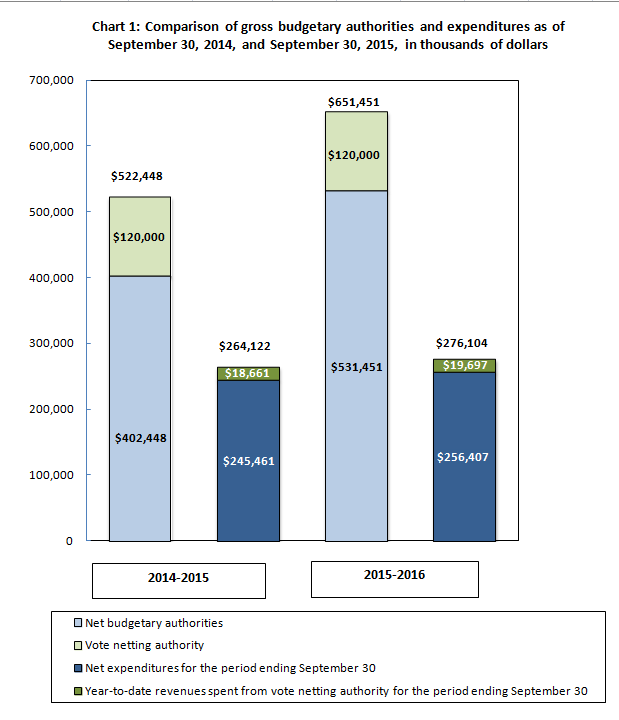Description of visuals
Gross Domestic Product – GDP for short – can be thought of as an overall grade on the economic report card of a country or region.
(A school report card is shown.)
It's one way to measure of the size and growth of the economy. For example, if the year-to-year GDP is up 3%, this means that the economy has grown by 3% over the last year.
(Under the "remarks" section of the report card, the text "Gross Domestic Product (GDP) is increasing" is shown. The word "increasing" is underlined, and the line is drawn across the page to form a line chart. The line chart indicates a 3% increase.)
In order to determine the GDP, economists at Statistics Canada compile a massive amount of data including information from hundreds of surveys that are completed by Canadian businesses, the government and Canadian households.
(The line from the line chart becomes an "X" that is drawn into a check box on a survey. The top of the survey reads "Hundreds of Statistics Canada Surveys filled out by Canadian Businesses, Government, and Canadian Households.")
Several methods are used to determine the GDP. One of the most direct methods is called the "value-added approach." To explain it, let's start with our standard definition of GDP, which is "the value of output less intermediate consumption plus any taxes less subsidies on products not already included in the value of output."
(The survey crumples up into a paper airplane and flies into a classroom. Inside the classroom, a chalkboard is shown with the definition of GDP written on it.)
You might find that definition a little hard to follow. So let's break it down with an example. For this example, let's also assume that the "taxes less subsidies on products not already included in the value of output" is equal to zero.
(A line is drawn through this section of the definition.)
Alright - let's say you have an automobile assembly plant. Every year, the plant produces all sorts of cars. The total worth of all the cars produced annually in the factory is $1,000,000.
(A conveyor belt is shown, with a car being assembled by robotic arms. The conveyor belt has the text "$1,000,000 worth of cars.")
That $1,000,000 in the production of cars is considered to be the output.
(The chalkboard shows the text "output = $1,000,000 worth of cars" )
Let's return to the definition. GDP is the value of output, in this case the value of the cars, less intermediate consumption.
(The definition is again shown on the chalkboard.)
So, what is intermediate consumption?
(The car that was just assembled drives down the road and then drops into a machine labeled "$700,000 worth of car parts." The machine then produces boxes labeled "car parts.")
Well, let's say the automobile assembly plant needs to purchase $700,000 worth of car parts from the motor vehicle parts manufacturing industry before it can fabricate the $1,000,000 worth of cars. The $700,000 worth of car parts is considered to be intermediate consumption. To return to the definition again, GDP in this case is the output of $1,000,000 worth of cars, less the intermediate consumption, which is $700,000 for the car parts.
So, in our example, $300,000 is considered to be the GDP of the car assembly plant.
(The chalkboard shows the equation of output ($1,000,000 worth of cars) minus intermediate consumption ($700,000 worth of car parts) equals output ($300,000).)
But the story doesn't end there. Let's look at the motor vehicle parts manufacturer that produced the parts for the assembly plant. In order to produce the parts, it first had to purchase steel from the steel mill. Before that, the steel mill had to purchase the iron ore from a mine, and so on.
(Images of a welding in a steel mill and an iron ore mine are drawn on the chalkboard.)
Each of these industries involved in the process, harvesting the ore, making the steel, making the car parts etc. has its own output and intermediate consumption, which also means that each industry has its own GDP.
(Images to represent each industry appear on the chalkboard. Numbers appear in front of them to reflect their respective GDP amounts. The steel mill and the iron ore mine each have a GDP of $200,000, while the car parts manufacturer and the car assembly plant each have a GDP of $300,000.)
The GDP values of each of these industries must all be added together to reflect the total GDP of the economy. So, although the GDP of the automobile assembly plant is only $300,000, the GDP attributed to the entire economy would be much higher. In fact, it could actually be closer to, well, $1,000,000.
(A plus sign is drawn between each number on the chalkboard, they are then combined to make $1,000,000.)
To summarize, in the example that was just illustrated, we identified 4 industries that were included in our little economy. Those industries were the automobile assembly industry, the motor vehicle parts manufacturing industry, the steel manufacturing industry, and the iron ore mining industry. The sum of the value added of each industry gave us the total GDP for the economy.
(Each of the four aforementioned industries are shown again, with their respective GDP measures. They are added again to make $1,000,000.)
Gross Domestic Product is the metre stick of the economy. Broadly, when it's increasing, the economy is said to be growing. If GDP is slowing down or negative, it can be an early sign of recession. That's why we take great care to provide Canadians with access to accurate, up-to-date GDP data. You can learn more about GDP at www.statcan.gc.ca.
(As the camera retracts from its close-up on the chalkboard, the website URL is shown. The website address fades to black, and the Canada wordmark fades in.)

